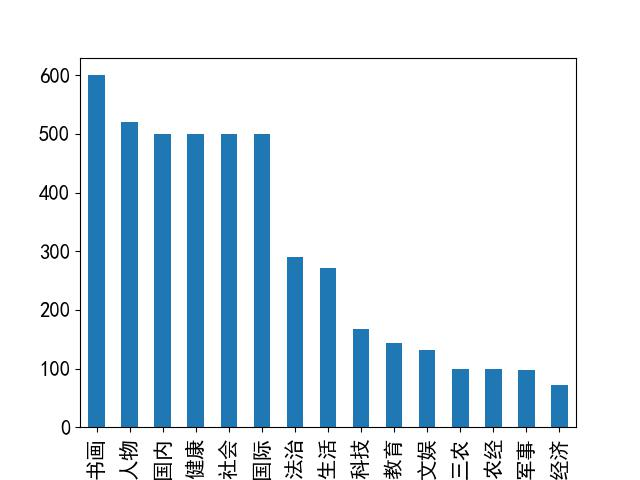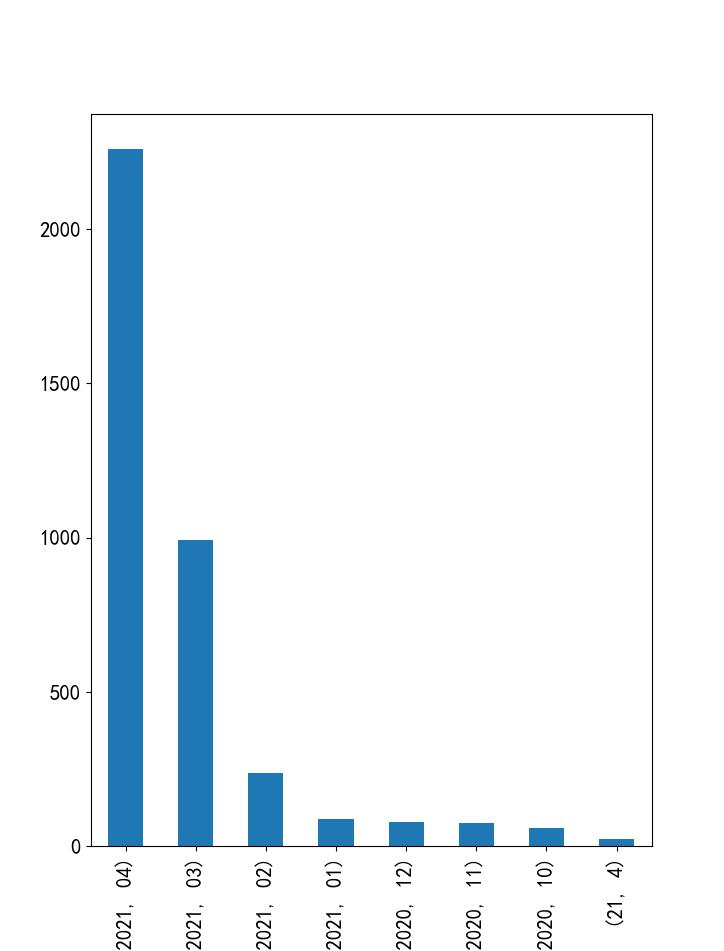
Figure 2.1 distribution of news categories

Figure 2.2 news time distribution



| coefficient | 0-0.2 | 0.2-0.4 | 0.4-0.6 | 0.6-0.8 | 0.8-1 |
| Consistency coefficient | Very low | commonly | secondary | height | Almost identical |
Table 2.5 advantages and disadvantages of evaluation indicators
Classification accuracy: 0.6059661620658949
| precision | recall | f1-score | support | |
| 0 | 0.57 | 0.95 | 0.71 | 298 |
| 1 | 0.47 | 0.76 | 0.58 | 241 |
| 2 | 0.66 | 0.91 | 0.77 | 236 |
| 3 | 0.59 | 0.61 | 0.60 | 259 |
| 4 | 0.81 | 0.86 | 0.83 | 264 |
| 5 | 0.50 | 0.62 | 0.55 | 259 |
| 6 | 0.83 | 0.42 | 0.56 | 146 |
| 7 | 0.69 | 0.15 | 0.25 | 133 |
| 8 | 1.00 | 0.02 | 0.04 | 92 |
| 9 | 0.75 | 0.04 | 0.08 | 68 |
| 10 | 0.00 | 0.00 | 0.00 | 66 |
| 11 | 0.00 | 0.00 | 0.00 | 48 |
| 12 | 1.00 | 1.00 | 1.00 | 47 |
| 13 | 0.00 | 0.00 | 0.00 | 50 |
| 14 | 0.00 | 0.00 | 0.00 | 39 |
| precision | recall | f1-score | support | |
| accuracy | 0.61 | 2246 | ||
| macro avg | 0.52 | 0.42 | 0.40 | 2246 |
| weighted avg 0.59 0.61 0.54 2246 Kappa:0.5562815523035762 | ||||
import pandas as pd
import matplotlib.pyplot as plt
import warnings
plt.rcParams["font.family"] = "SimHei"
plt.rcParams["axes.unicode_minus"] = False
plt.rcParams["font.size"] = 15
warnings.filterwarnings("ignore")
#Read data
news = pd.read_csv("news (1).csv", encoding="gbk")
print(news.head())
###Missing value processing
news.info()
##Fill in the missing news title with a news introduction
index = news[news.title.isnull()].index
news["title"][index]=news["brief"][index]
##Fill in the missing news profile with news headlines
index = news[news.brief.isnull()].index
news["brief"][index]=news["title"][index]
news.isnull().sum()
#Duplicate value processing
print(news[news.duplicated()])
news.drop_duplicates(inplace=True)
#News category distribution
###Data exploration descriptive analysis
t = news["News category"].value_counts()
print(t)
t.plot(kind="bar")
#Time of occurrence
t = news["Release time"].str.split("-", expand=True)
t2 = t[[0,1]].value_counts()
t2.plot(kind="bar")
#Text content cleaning
import re ####Text processing sub calls the compiled regular object to process the text
re_obj = re.compile(r"['~`!#$%^&*()_+-=|\';:/.,?><~·!@#¥%......&*()-+-=": ';,. ,?><{}': []<>''""\s]+")
def clear(text):
return re_obj.sub("", text)
news["brief"] = news["brief"].apply(clear)
news.sample(10)
#participle
import jieba
def cut_word(text): ###Word segmentation: use jieba's lcut method to segment words and generate a list,
####cut() generates a generator that takes no or very little space. It can be converted into a list using list()
return jieba.lcut(text)
news["brief"] = news["brief"].apply(cut_word)
news.sample(5)
print(news["brief"].head())
#Stop word processing
def get_stopword(): ####Deleting stop words means that a large number of words appear in the text, which are useless for classification, reduce storage and computing time
s = set() ###The key mapping data list processed by hash stores the mapping data in the order of subscripts
with open("Chinese stop list.txt", encoding="gbk") as f:
for line in f:
s.add(line.strip())
return s
def remove_stopword(words):
return [word for word in words if word not in stopword]
stopword = get_stopword()
news["brief"] = news["brief"].apply(remove_stopword)
news.sample(5)
print(news["brief"].head())
#Label conversion
label_mappping = {"Painting and Calligraphy": 0, "character": 1, "international":2,"domestic": 3,"healthy": 4,"Sociology": 5,"rule by law": 6,"life": 7,"science and technology": 8,"education": 9,"Entertainment": 10,
"rural economy": 11,"Agriculture, rural areas and farmers": 12,"military": 13,"Economics": 14}
news["News category"] = news["News category"].map(label_mappping)
print(news.head())
print("--------------------------------------3------------------------------------------")
#Segmentation data
from sklearn.model_selection import train_test_split
x =news["brief"]
y = news["News category"]
x_train, x_test, y_train, y_test = train_test_split(x.values, y.values, test_size=0.5)
def format_transform(X): #x is the data set (training set or test set)
words =[]
for line_index in range(len(X)):
try:
words.append(" ".join(X[line_index]))
except:
print("There is a problem with the data format")
return words
#train
from sklearn.feature_extraction.text import TfidfVectorizer
from sklearn.naive_bayes import MultinomialNB
words_train = format_transform(x_train)
vectorizer = TfidfVectorizer(analyzer='word', max_features=4000,ngram_range=(1, 3),lowercase = False)
vectorizer.fit(words_train)#Convert to vector format
classifier = MultinomialNB()
classifier.fit(vectorizer.transform(words_train), y_train)
#Test and inspection related results
from sklearn.metrics import classification_report
words_test = format_transform(x_test)
score = classifier.score(vectorizer.transform(words_test), y_test)
print("----------------------------------Classification result report-----------------------------------------")
print("Classification accuracy:" + str(score))
y_predict = classifier.predict(vectorizer.transform(words_test))
print(classification_report(y_test, y_predict))
#evaluating indicator
from sklearn.metrics import cohen_kappa_score
kappa = cohen_kappa_score(y_test, y_predict)
print(kappa)